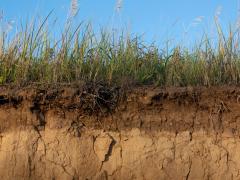Progress in Advancing Drought Monitoring and Prediction
In a special American Meteorological Society (AMS) collection, 13 papers based on research funded by the National Integrated Drought Information System (NIDIS) describe advances leading to improved monitoring, prediction, and understanding of past droughts.
The advances represent outcomes funded through the third NOAA Climate Program Office Modeling, Analysis, Predictions, and Projections (MAPP) program Drought Task Force (DTF3), leveraging other U.S. agencies’ investments, and coordinated within the framework of DTF3.
The collection includes an introductory paper that describes the motivations of the research and highlights some recent advances in drought monitoring and prediction systems. Other papers include “Drought Variability over the Conterminous United States for the Past Century,” “Prediction of Flash Droughts over the United States,” and “Prediction Skill of the 2012 U.S. Great Plains Flash Drought in Subseasonal Experiment (SubX) Models.”
The collection was organized by DTF3 lead, Christa Peters-Lidard, and co-leads Pierre Gentine, Michael Barlage, Dennis Lettenmaier, and David M. Mocko. Over 30 DTF3 members contributed, representing over 20 universities and federal institutions.
In the past decade, coordinated efforts among scientists have significantly advanced drought research and early-warning capabilities. The MAPP Drought Task Force, for example, is composed of U.S. drought experts selected through a competitive proposal process run by the MAPP Program in collaboration with NIDIS. Over its 10-year history, the Drought Task Force has led community research efforts to study drought causes, predictability, modeling, and monitoring that enhance early-warning capabilities in support of the NIDIS mission.



